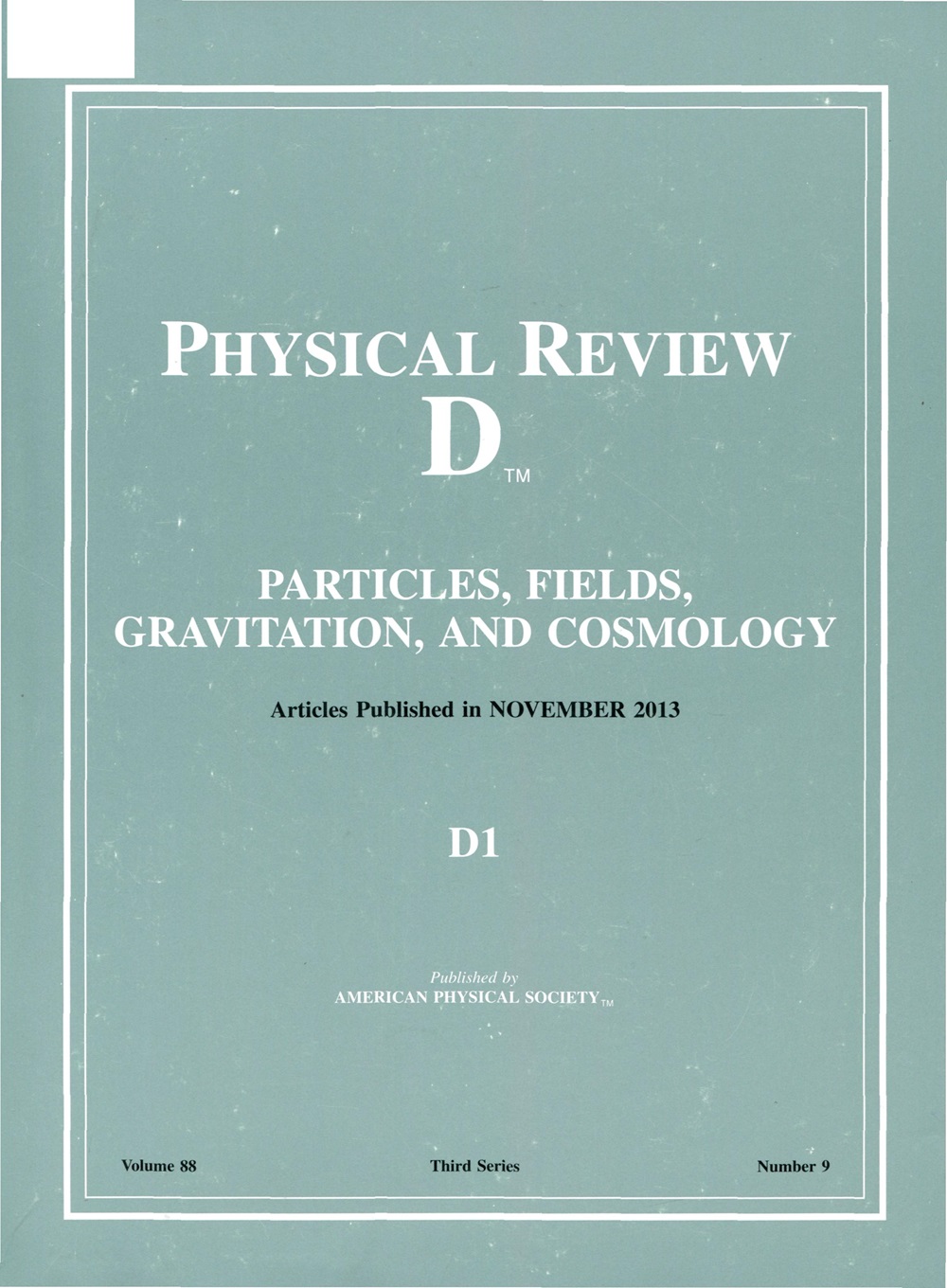太阳有一个暗盘吗?
IF 5
2区 物理与天体物理
Q1 Physics and Astronomy
引用次数: 0
摘要
太阳并不是一个完美的球体,它的扁率,被认为是由它的旋转引起的,已经通过光学观测来测量它的半径。它的引力四极矩可以通过太阳模型或日震学推断出来,也可以通过测量它对水星轨道的引力效应来确定。各种评估似乎不一致,最完整和最精确的轨道评估略超过其他确定。这可能说明了一个不发光的圆盘或环的存在,我们也注意到水星轨道内太阳周围的尘埃环的证据,来自太阳地球关系天文台(STEREO)的任务。从历史上看,原行星盘可能是调和太阳的金属丰度和中微子产量的关键。水星轨道内非发光质量的分布可以以不同的方式改变光学和轨道四极矩的相对大小。我们开发了如何利用这些发现来限制太阳附近的暗盘、暗环或暗晕的质量,我们注意到未来对太阳系内部的观测研究不仅可以改进这些限制,还可以帮助识别和评估其暗物质成分的质量。2025年由美国物理学会出版本文章由计算机程序翻译,如有差异,请以英文原文为准。
Does the Sun have a dark disk?
The Sun is not quite a perfect sphere, and its oblateness, thought to be induced through its rotation, has been measured using optical observations of its radius. Its gravitational quadrupole moment can then be deduced using solar models, or through helioseismology, and it can also be determined from measurements of its gravitational effects on Mercury’s orbit. The various assessments do not appear to agree, with the most complete and precise orbital assessments being in slight excess of other determinations. This may speak to the existence of a nonluminous disk or ring, where we also note evidence for a circumsolar dust ring within Mercury’s orbit from the Solar TErrestrial RElations Observatory (STEREO) mission. Historically, too, a protoplanetary disk may have been key to reconciling the Sun’s metallicity with its neutrino yield. The distribution of the nonluminous mass within Mercury’s orbit can modify the relative size of the optical and orbital quadrupole moments in different ways. We develop how we can use these findings to limit the mass of a dark disk, ring, or halo in the immediate vicinity of the Sun, and we note how future observational studies of the inner Solar System can not only refine these constraints but can also help to identify and to assess the mass of its dark-matter component. Published by the American Physical Society 2025
求助全文
通过发布文献求助,成功后即可免费获取论文全文。
去求助
来源期刊

Physical Review D
物理-天文与天体物理
CiteScore
9.20
自引率
36.00%
发文量
0
审稿时长
2 months
期刊介绍:
Physical Review D (PRD) is a leading journal in elementary particle physics, field theory, gravitation, and cosmology and is one of the top-cited journals in high-energy physics.
PRD covers experimental and theoretical results in all aspects of particle physics, field theory, gravitation and cosmology, including:
Particle physics experiments,
Electroweak interactions,
Strong interactions,
Lattice field theories, lattice QCD,
Beyond the standard model physics,
Phenomenological aspects of field theory, general methods,
Gravity, cosmology, cosmic rays,
Astrophysics and astroparticle physics,
General relativity,
Formal aspects of field theory, field theory in curved space,
String theory, quantum gravity, gauge/gravity duality.
 求助内容:
求助内容: 应助结果提醒方式:
应助结果提醒方式:


